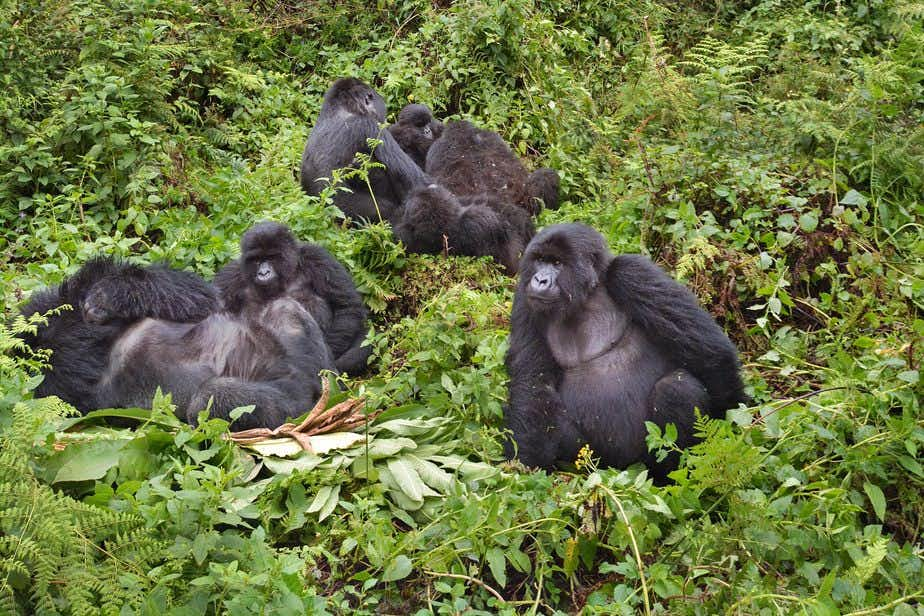Login
No account yet?
Create Account
Bwindi Impenetrable National Park
Home of mountain gorillas and chimpanzees
2 travellers have this on their Bucket List
0 been here
Bwindi Impenetrable National Park is a famous nature reserve in Uganda. It is also one of the best places in Africa to see the endangered mountain gorilla. Half of the entire world population lives in this rainforest.
The name speaks for itself: Bwindi means forest so it means the impenetrable forest. Or even more appropriate might be its nickname land of darkness. In this place, trees, bushes and plants fight over every inch of land. Bwindi is part of the Virunga Mountains, an impressive mountain range in Africa.
But even more important: sunlight. It’s survival of the fittest here. Bwindi is a fortress of green, unhospitable to humans. This is why animals have thrived and survived here for so long.
The forest grows at an altitude of between 1.160 to 2.607 metres, on the hills of the Rift Valley. Bwindi is only 25 kilometres away from Virunga National Park, which is also famous for its mountain gorillas.
Mountains gorillas of Bwindi Impenetrable Forest
The absolute star of the park is the mountain gorilla. Scientists believe that this subspecies of the eastern gorilla has lived in the Bwindi forest for at least 25.000 years. It’s an area with surprisingly little impact from humans, because the Ugandan government declared a large part of it a protected area back in 1932, and since then it has been expanded even further. Even today, the impact from humans is kept to a minimum.
Check my video
What does a mountain gorilla safari in Bwindi look like?
You will be assigned to a guide. He, or she explains how the excursion will run, what rules will apply and how the animals will react. Very important is the part where he explains the gorilla language. And what sounds to make when you are around the animals. And especially with the dominant males.
Along the way you will see the landscape of Bwindi, which consists largely of rainforest. You may see other animals, although chances are small. The mountain gorillas are continuously monitored, so that the trackers know where the animals are approximately.
It gives you a better chance of seeing the animals. The meeting with these elusive apes lasts an hour, then you have to return. And yes, this is well worth the money. Even though it is expensive.
Batwa Pygmies
Some of the local people of the area, the Batwa (sometimes referred to as Batwa Pygmies) were violently evicted from the park in 1991 when the Bwindi forest officially became a national park. They were not compensated or supported at the time, and are now forced to live in squalid conditions at the edge of the park.
Their traditional hunting methods have been banned, and they are not even allowed to enter the forest. Thankfully, there are talks in progress to allow the Batwa to return to their traditional land, both here and in other parks.
Best time to visit
There are two good periods to visit Bwindi: In January and February, and June to September. These are drier months and so the dirt tracks are easier to navigate. Though it can still rain in those times, and the tracks still get hard to walk on.
From March until May it’s hot, rainy and humid. The same goes for October to November, when roads are hard to use, and the park can become inaccessible. The temperature ranges from 22 to 30 degrees Celsius, both in dry and wet seasons.
Be aware
Only a limited number of people can visit the gorillas in the park. This means you have to arrange your permit beforehand. You can do this at the Uganda Wildlife Authority in Kampala, or you can book a trip with a travel agency that can arrange the permit for you.
It’s also possible you will be denied access if you have even the slightest cold or a runny nose. This is to protect the gorillas from diseases that have little effect on humans, but can make them very sick or even kill them. So make sure you are in good health when you want to go here.
2 travellers have this on their Bucket List
0 been here


